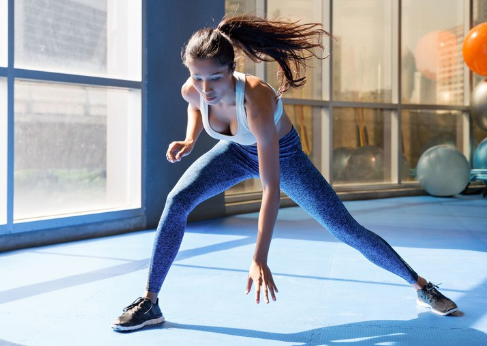Nearly anyone can securely take up strolling, and light to direct exercise is normally fine for solid grown-ups with no irksome indications. Be that as it may, do you have to converse with your specialist before taking on an increasingly strenuous routine? It's astute to converse with a specialist on the off chance that you have any inquiries concerning your wellbeing or plan to begin increasingly incredible exercises, particularly in the event that you haven't been dynamic as of late.
Unquestionably converse with a specialist on the off chance that you have any wounds or a perpetual or insecure wellbeing condition, for example, coronary illness or a few hazard factors for coronary illness, a respiratory affliction like asthma, hypertension, joint or bone ailment (counting osteoporosis), a neurological ailment, or diabetes. Likewise counsel your specialist on the off chance that you presume you may have a sickness that would meddle with an activity program or in the event that you have been encountering any inconvenient side effects, for example, chest torment, shortness of breath, or tipsiness.
10 hints for dodging wounds
When your specialist gives you the thumbs up to exercise, the tips underneath can enable you to keep away from wounds:
Take five to 10 minutes to heat up and chill off appropriately.
Plan to begin gradually and help your action level slowly except if you are as of now practicing much of the time and enthusiastically.
Know that preparation excessively hard or time and again can cause abuse wounds like pressure cracks, hardened or sore joints and muscles, and excited ligaments and tendons. Sports inciting tedious mileage on specific pieces of your body —, for example, swimming (shoulders), running (knees, lower legs, and feet), tennis (elbows) — are frequently abuse offenders, as well. A blend of various types of exercises and adequate rest is more secure.
Tune in to your body. Hold off on exercise when you're wiped out or feeling exceptionally exhausted. Cut back on the off chance that you can't complete an activity session, feel black out after exercise or exhausted amid the day, or endure persevering a throbbing painfulness in joints in the wake of working out.
On the off chance that you quit practicing for some time, drop back to a lower dimension of activity at first. In case you're doing quality preparing, for instance, lift lighter loads or do less reps or sets.
For the vast majority, essentially drinking a lot of water is adequate. Be that as it may, in case you're working out particularly hard or completing a long distance race or marathon, pick drinks that supplant liquids in addition to fundamental electrolytes.
Pick garments and shoes intended for your kind of activity. Supplant shoes at regular intervals as padding wears out.
For quality preparing, great structure is basic. At first utilize no weight, or light loads, when learning the activities. Never penance great structure by rushing to complete reps or sets, or attempting to lift heavier loads.
Practicing energetically in hot, moist conditions can prompt genuine overheating and drying out. Moderate your pace when the temperature transcends 70°F. On days when the thermometer is required to achieve 80°F, practice amid cooler morning or night hours or at a cooled rec center. Watch for indications of overheating, for example, cerebral pain, discombobulation, queasiness, faintness, issues, or palpitations.
Dress appropriately for chilly climate exercises to maintain a strategic distance from hypothermia. Contingent upon the temperature, wear layers you can strip off as you warm up. Remember gloves.
Postponed muscle soreness that begins 12 to 24 hours after an exercise and step by step lessens is an ordinary reaction to exhausting your muscles. On the other hand, determined or serious muscle torment that begins amid an exercise or right subsequently, or muscle soreness that perseveres more than one to about fourteen days, justifies a call to your specialist for guidance.



0 Comments